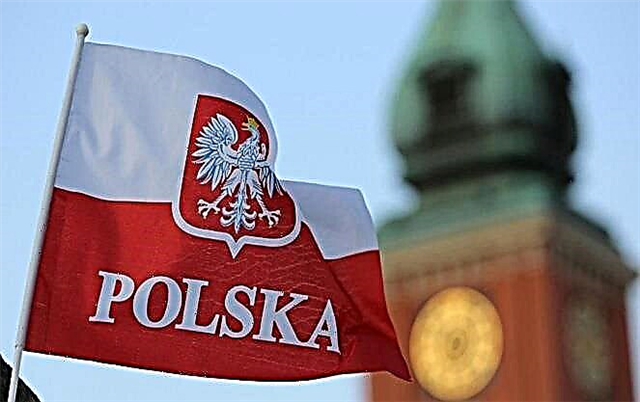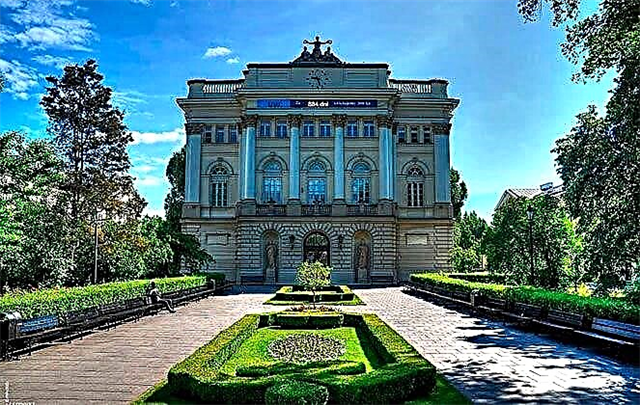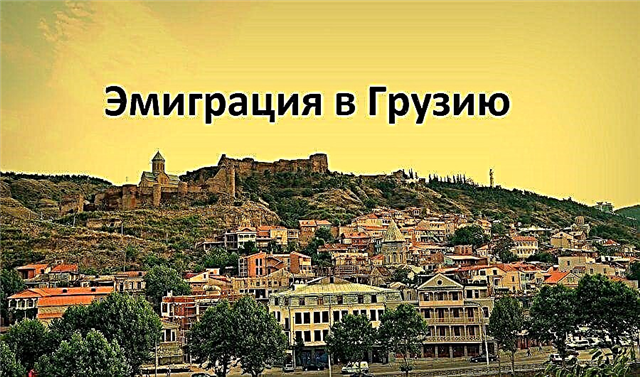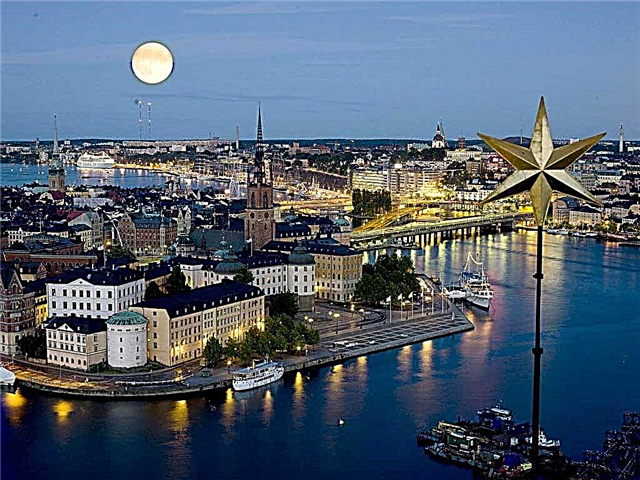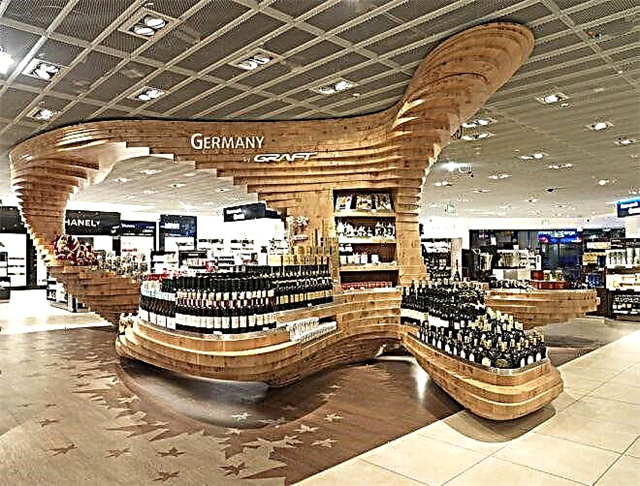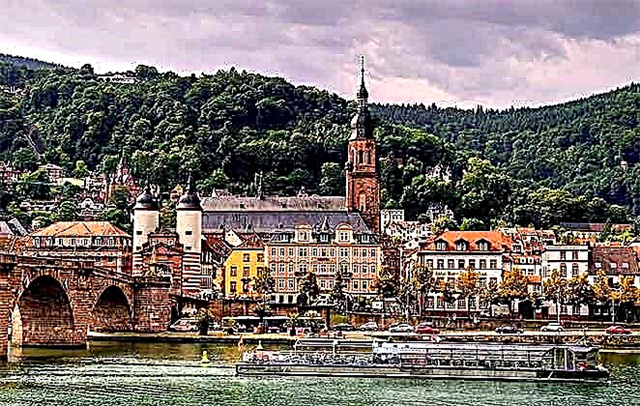The sharp rise in property prices in Mainz and the rapid growth in demand for housing in this city did not go unnoticed by German and foreign investors. Predictions of further rise in prices for residential and commercial properties associated with the implementation of large construction projects, the developed economy of the city, high purchasing power of the local population, excellent infrastructure and transport links, contribute to an unprecedented rise in the city's real estate market and an increase in the level of competition among stakeholders.

Characteristics of Mainz and the peculiarities of the city's real estate market
Mainz is the state capital and the largest independent city in the federal state of Rhineland-Palatinate with a population of 213,528 inhabitants. It is located in the Rhine-Main region and together with Wiesbaden, the neighboring state capital of Hesse, constitutes a transnational dual center with a population of about 490,000.
The favorable location, well-developed infrastructure, excellent transport links and the combination of a big city with rural settlements make Mainz an extremely attractive city, attracting more and more immigrants, especially young people, every year.
City appearance, architecture
The city of Mainz is becoming more urbanized both in the areas close to the center and in the suburbs. The modernization of Weisenau and Mombach is gaining a particularly fast pace.
In some remote areas, like Dreis and Finten, the village's rustic character has remained intact. Many elements of urban planning have been preserved near the center, the medieval and modern cityscape resembles an improved “old town” with winding streets and alleys around Augustinerstraße - half-timbered houses still stand here.
Quite large parts of the historic city, especially north of Ludwigsstraße, were damaged during World War II, so most of the buildings had to be demolished or modernized. The new town was built in the Wilhelmina style around 1900 and Mainz ceased to be a provincial walled city.
Today, the city's panorama is dominated by buildings from two different eras: the town hall complex with the Hilton hotel and the Rheingoldhalle from the Art Nouveau era and the State Chancellery, Parliament and the Electoral Palace - in the Baroque and Renaissance style. An ambitious restructuring of the city center was planned, largely damaged during the Second World War, but only the most important buildings were eventually restored, including the baroque aristocratic palaces located mainly on the Schillerplatz.
For the most part, only new residential buildings were built, for example, the settlement of Am Fort Elisabeth. Due to the late development bustle in the early 1960s, these structures were erected mainly in the style of the decade that urban farmers then criticized. Many residential complexes have been created in the 1960s style.
The most important buildings in Mainz from the 19th century that have survived to this day are the Protestant Christuskirche church, the main railway station, the Rhine bridge, parts of the state theater, as well as fortifications and their remains. Various examples of the Romanesque and Gothic periods of construction, the Renaissance, and especially buildings in the Baroque style are protected.
Main Cathedral was built in the Romanesque style. The Gothic style is reminiscent of the Cathedral, the Church of St. John, the Collegiate Church of St. Stephen and the churches of St. Emmeran, St. Quintin, St. Christophe.
In memory of the Renaissance, the city has preserved the Electoral Palace - the last witness of the “German Renaissance”, the Zum Römischen Kaiser (Gutenberg Museum), the fountain donated by Archbishop Albrecht, and the Domus Universitatis.
Several farms of the former Mainz nobility and the Augustinerkirche church remain from the Baroque period. St. Peter's Church was built in the Rococo style, while the churches of Ignaz and Erthaler Hof were built, which are early examples of classicism.
Today Mainz is characterized by a combination of different architectural styles. The destruction of the Second World War prompted local politicians in the 1960s to fix old mistakes in the buildings of the road network and the rest of the city's infrastructure. Many new churches were built, Krongarten and Gonsbachterrassen developed.
The most important project recently was the development of a 22 hectare site of the former customs and internal port - the territory was built up with apartments of various sizes, offices, commercial facilities and cultural institutions.
In 2007, a master plan for the development of Mainz was adopted, which involves the development of territories up to 355,000 square meters.
The next major project is the development of the Heilig-Kreuz-Areal in Weisenau. On the 30-hectare site, 3,000 new apartments will be built, 900 of which are social housing for 4,500 people.
About 500 more apartments are to be built on 8.7 acres of land between the Catholic hospital and a Parisian street by 2021. Also, the area in the Hechtsheim district in the eastern part of the residential district of Großberghöhe will be developed as a residential area Hechtsheimer Höhe - on an area of 17 hectares, single and multi-apartment buildings with 400 apartments will be built.
Administrative division of the city
The city of Mainz is divided into 15 districts. 7 planning areas, 65 municipalities and 183 statistical districts are also designated.

| District | Main characteristics |
|---|---|
| Altstadt (Altstadt) | The most remarkable old buildings here are the medieval cathedral, the old houses of the patricians, the Electoral Palace. There are also modern buildings on picturesque squares and winding streets - the Town Hall, Brand-Einkaufsentrum, Reingoldhalle, Fort Malakoff. The area was completely destroyed between 1942 and 1945, but many structures have been carefully restored and rebuilt. |
| Bretzenheim | The oldest village with a rustic look and a traditional wine-making community. The spirit of a bygone era is preserved in the narrow streets of the center, the old town hall with a prison tower and the Georgskerhe Catholic Church. Modern buildings include residential complexes, schools, kindergartens and the Alte Ziegelei, where entertainment events take place all year round. |
| Drais | One of the most sought after residential areas in the city. It is a green “oasis” on the outskirts of Mainz, surrounded by fields and fruit trees. The close proximity to the center, the tranquil atmosphere, the location close to the Ober-Olmer forest and the University, and direct access to the motorway to Wiesbaden and Frankfurt make Dreis a desirable place to stay. There is an elementary school, kindergartens, playgrounds, sports clubs, a hospice for seriously ill people and a nursing home. |
| Ebersheim | Ebersheim is home to the largest wine-growing region of Mainz and the highest point in the city - the 245-meter square "Auf der Muhl". The area is characterized by the presence of numerous development zones and its proximity to the center of Mainz. Ebersheim is constantly evolving, but retains the rustic character of the settlement. |
| Finthen | Rural suburb with several new settlements - Königsborn, Katzenberg and Römerquelle, converted into a residential area. There are schools and kindergartens here, and there are many bike paths. Direct motorway access to Mainz, Frankfurt and Wiesbaden is possible. The area is popular thanks in large part to its beautiful old center with winding streets and town hall, as well as its frequent recreational activities. |
| Gonsenheim | This area has everything for an independent life that does not depend on the rest of Mainz - the old city center, stately villas, modern residential complexes, a busy shopping street, a recreational area, farms for growing vegetables and fruits, and its own carnivals. Old and new buildings coexist harmoniously with each other. among the old buildings, the Renaissance Town Hall, Stephen and Protestant churches stand out. Particularly appreciated are the direct access to the motorway, the proximity to the center, green areas, local farmers' produce, the zoo, the Am Hemel industrial park and the Kisselberg office buildings. |
| Hartenberg-Münchfeld | The area is located between the center of Mainz and Gonsenheim, characterized by a high standard of living, built up with terraced and apartment buildings. Especially popular with families and students due to good transport links, proximity to the university and the countryside. The ice skating stadium, the Südwestrundfunks media house and the Landeszentralbank are open here, there is an artists' quarter, shops, schools, kindergartens, Hartenberg Park. |
| Hechtsheim (Hechtsheim) | The area retains its identity with its winding and forked streets, cul-de-sacs, home paths, courtyards and old buildings. In the 1960s, an industrial village with an area of more than 100 hectares was built here, in which today media and IT companies operate and the largest industrial real estate is for sale. The area is optimally connected to traffic, the motorway ring provides quick access to the main roads of the Rhine-Main. In addition to the commercial settlement, agriculture and viticulture are developing. Festivals are often held. |
| Laubenheim (Laubenheim) | The area is located a few kilometers from the center and offers ideal places for recreation and entertainment. It is connected to Federal Highway 9, the Mainz-Worms motorway and the Mainz-Worms railway. The region is distinguished by a varied flora and fauna, the development of viticulture. A nature reserve is located here, here and there houses with baroque courtyards have been built. There are many clubs of interest, festivals are held. |
| Lerchenberg (Lerchenberg) | The area is close to the vicinity of the Rhine-Hessian on one side and to the center of Mainz and the motorway on the other. There are Catholic and Protestant churches, an elementary school, a high school, 4 day centers, a post office, police, restaurants and a shopping center. The architectural landscape of the area is characterized by terraced houses in the south, bungalows in the north and high-rise buildings in the center. It is appreciated for its recreational area and the proximity of the forest. It has good infrastructure and excellent transport links. The largest employer is the ZDF Broadcasting Center. |
| Marienborn | The small area is located on the Mainz-Alsee railway line and the A 63 motorway. It is a popular residential suburb in the countryside. It is attractive due to its proximity to ZDF and the scientific center of the glass manufacturer SCHOTT. The rustic character is preserved - in the area there are typical central German estates, an old church. |
| Mombach | Mombach is one of the important commercial and industrial sites in Mainz. The headquarters of such companies as Nestle, Hakle, Methanova, Schott is located here. The non-industrial area is characterized by many fields, gardens and a nature reserve. The area has good infrastructure - schools, kindergartens, schools, sports facilities, tennis courts, indoor and outdoor swimming pools, shops, supermarkets, hardware stores. |
| Neustadt (Neustadt) | The area was almost completely destroyed during the Second World War, but several buildings with grandiose facades and a church have survived. There is a customs port on the banks of the Rhine, which will soon be transformed into a new city block (the first buildings are already under construction - the wine storage has been converted into an office complex). There are many pubs, cafes, craft shops, social institutions here. |
| Oberstadt | Of the old buildings in the area, the army camp, the Powder Tower, the Citadel have been preserved. An attractive residential and recreational area has been created since the 19th century. Hospitals and university clinics, Johannes Gutenberg University and campus opened. |
| Weisenau | Weisenau resembles a fishing village. There is a cement plant in the southeast. Good transport links - connections to the railway, highway. It is appreciated by local residents for its proximity to the center and good infrastructure - schools, kindergartens, shops, numerous hobby clubs are open here. |
Infrastructure, educational and medical institutions
Mainz became a university town in 1477. At the end of the 18th century, the new Johannes Gutenberg University resumed its studies on May 15, 1946. Today, the Faculty of Medicine of this institution is the only opportunity to study medicine for the inhabitants of Rhineland-Palatinate.
The university has a university clinic, which is also the only institution of its kind on the territory of the federal state. A unique feature of the educational institution is the teaching within its walls of music, fine arts and sports at the same time.
Johann Gutenberg University is one of the largest employers in the city, with 11,000 employees, of which 7,700 work in the Faculty of Medicine. The University cooperates with the Institute of Chemistry (Otto-Hahn Institute) and the Institute for Polymer Research. Max Planck.
Music training is offered by the Peter Cornelius Conservatory. The city also has an Academy of Sciences and Literature.
In 2021, Mainz hosted numerous events, exhibitions and lectures in conjunction with city universities, associations and other educational institutions, for which Stifterverband awarded it the title of “City of Science”.
As in any university city, Mainz is mostly populated by young people, and this should be taken into account when buying real estate.
For example, there is a shortage of small-area apartments on a university campus. Accordingly, the acquisition of apartment buildings, apartment buildings near educational institutions, as well as student dormitories will bring substantial profits to the investor.
As of June 30, 2021, 6 hospitals have been opened in Mainz, employing 713 practicing doctors and 62 pharmacies.
Johann Gutenberg University Hospital is the largest medical institution in the city, it is divided into 60 specialized hospitals, institutes and departments. The clinic has 1,500 beds and serves about 325,000 patients a year, of which 65,000 are outpatients. The institution is an internship for about 3300 students of the Faculty of Medicine.
In 2021, the Katholische Klinikum Mainz merged St. Hildegardis Hospital and St. Vincenz and Elisabeth Hospital in the An der Goldgrube facility. Now the clinic has special centers for the treatment of diseases of the breast, intestines, lungs, thyroid gland and 19 other departments.
The hospital has a capacity of 717 beds and annually serves about 45,000 outpatients and inpatients. According to the current KKM 2021 program, it is planned to increase the number of patients served to 50,000 patients per year.
Mainz is also home to one of the largest pain clinics in Europe - DRK Schmerz-Zentrum, with 80 inpatient beds, 24 semi-permanent beds and the ability to provide emergency care for 5,000 patients annually.
There are also private sponsored clinics in the city, for example, the ENT clinic Römerwallklinik GmbH and the plastic surgery clinic FONTANA-Klinik GmbH.
In addition to the listed medical facilities, there is a nationwide neuro-neurological center and an outpatient center for social pediatrics with a special outpatient department for the study of spinal diseases and hydrocephalus.
Since there are no other clinics similar to these in Rhineland-Palatinate and in the immediate vicinity, the investor has a chance to make a quick return on investment in residential properties in the immediate vicinity of medical institutions.
The patients of the clinics are not only residents of Mainz and Frankfurt, but also citizens of other German cities and foreigners. Complex diseases are treated for months, and sometimes for years, and after a course of recovery, a person needs a long time for rehabilitation. Many patients are accompanied by family members and also need living space.
Entertainment and cultural institutions
The city regularly hosts various entertainment events - from film festivals and carnivals to local traditional festivals. Students visit clubs and discos.
For sports lovers, there are many sports grounds, gyms, and a football field. Mainz hosts various sports competitions - for children, school, for adults. In particular, the annual Gutenberg marathon, chess competitions and triathlon competitions are held here.
Theater performances and concerts take place at the Staatstheater and at the Frankfurter Hof. Also, for lovers of comedy, cabaret and little-known screenwriters, the doors of small theaters such as Mainzer Kammerspiele, Unterhaus, Teatro d'Arte Scarello and Young Stage Mainz are open.
Fans of orchestral music will also find a place for cultural entertainment: first of all, we are talking about the Mainz State Philharmonic Orchestra, where symphony concerts are regularly held.
Mainz is mainly home to history museums.
- The most notable is the Romano-Germanic Central Museum (RGZM) as it houses one of the largest restoration workshops of its kind and enjoys an international reputation.
- Landesmuseum Mainz is one of the oldest museums in Germany and houses the most important art collections in Rhineland-Palatinate.
- The Museum of Ancient Shipping displays Roman ships found on the banks of the Rhine.
- At the world's only Printing Museum (the Gutenberg Museum), visitors can learn about the printing technique invented by Johannes Gutenberg and see the oldest printing techniques and mechanical seals.
- The Diocesan Museum tells the story of the Romanesque Episcopal Church and the Diocese of Mainz.
- There are also the Carnival Museum, the City History Museum, the Natural History Museum (the largest of its kind in Rhineland-Palatinate), the Garrison Museum and the Kunsthalle Mainz Museum of Contemporary Art.
Tourism, attractions
There are many attractions in Mainz. There are 14 churches built in various architectural styles. Noteworthy are such buildings as the Electoral Palace, Parliament, State Chancellery, Erthaler Hof, Osteiner Hof, Bassenheimer Hof, Schönborner Hof, citadel, Älterer / Jüngerer Dalberger Hof, guest house, Algesheimer Hof, iron tower, Holzturm.
Tourists come to see the nature reserve, the city park, the St. Christophe war memorial, the botanical garden and the city squares.
Mainz has many fountains, busts, monuments, sculptures by contemporary designers. An important role in the development of tourism is played by the fact that Mainz is a wine city.
There are no problems with the accommodation of guests of the city - in Mainz there are enough options for temporary housing:
- A budget option is to stay at the Jugendherberge Mainz, conveniently located between the People's Park and the Rhine.
- Tourists who are willing to spend a little more money on accommodation choose the Ibis Holzhofstraße 2 a few blocks from Altstadt.
- An expensive option is the 5-star Hyatt Regency Mainz, housed in a 19th century castle on the River Rhine.
The rest of the hotels are less popular with visitors. Only a building suitable for opening another hostel or a small hotel with conference rooms will be a profitable acquisition - there are enough hotels with expensive rooms in the city.
Economy and industry
The economy and infrastructure in Mainz is characterized by the city's affiliation with the confederation of Frankfurt and Rhine-Main. In rankings based on the economic performance of cities, Mainz has been at the forefront since the 2000s:
- For example, in a 2005 study by Wirtschaftswoche, Mainz was ranked 4th among the 50 most economically developed cities in Germany.
- In 2006, he took 5th place. It took into account economic and structural indicators such as productivity, gross income and investment.
- In the ranking of Insmed Incorporated (INSM) and wiwo.de, Mainz is ranked 48th out of 100 among the most economically developed German cities.
- Among 402 districts and independent cities in Germany, Mainz, according to Atlas in 2021, took 45th place, which makes it one of the settlements with "great prospects for the future."
In 2003, Mainz had 74 processing plants with a staff of 20 or more. In total, the companies employ over 11,000 people.
In 2002, there were 79 small firms with fewer than 20 employees.
Industrial settlements can be found primarily between the center of Mainz and the Mombach region. The largest companies located in this area are Werner & Mertz (Erdal), Schott AG, DWK Life Sciences, Wepa Papierfabrik, ADM Mainz GmbH biodiesel plant.
Since May 2008, Mainz and Reinhessen have been members of the Global Wine Network (GWC), founded in 1999, an association of renowned wine cities around the world. As a wine city, Mainz has significant self-help opportunities in the wine industry. Wine plays an important role in the city as an economic factor.
As a tourist and congress city, Mainz has numerous hotels, such as the Hilton, Hyatt, Atrium Hotel Mainz, The Favorite Parkhotel.
- In the district of Hechtsheim, there is a subsidiary of the large logistics company Kühne + Nagel.
- It also houses the headquarters of J. F. Hillebrand Group - a leader among logistics companies specializing in the transportation of wines and spirits.
- The Volksbank branch, the largest in Rhineland-Palatinate, operates in Mainz.
- The headquarters of the Holz und Metall is established in the Weisenau district.
- Finally, the city has the headquarters of the professional association of the leather industry - Lederindustrie-Berufsgenossenschaft.
The purchasing power of one resident of the city is 19.676 euros (as of 2005), which is 15% higher than the national average. According to a study published on June 30, 2006, Mainz was ranked 3rd among German cities in terms of the number of business registrations.
In 2002, 147,500 workers generated a gross domestic product of 55,890 euros each. These data leave no doubt that the population of Mainz is extremely solvent.
Transport connection
Mainz has excellent transport links. The city has built 2 road bridges across the Rhine. Mainz crosses the A 60 in a west-east direction, from Wiesbaden the A 643 leads here, and to the south the A 63 passes through Alzey to Kaiserslautern. Federal highways 9 and 40 are also laid through the city zone.
On February 1, 2021, the first ecological zone in the federal state of Rhineland-Palatinate was formed in Mainz and Wiesbaden, which is also the first transboundary ecological zone.
There are 104 long-distance trains departing from Mainz Central Station per day, carrying 60,000 people daily. The city is connected to the Deutsche Bahn express network, to the intercity and Euro network.
Since December 2005, a two-hour ICE connection runs from Wiesbaden to Dresden via Mainz, Frankfurt Airport, Fulda, Erfurt and Leipzig.
Mainz has 5 tram and 29 bus lines. To better organize the cooperation between the transport companies of Wiesbaden and Mainz, the Verkehrsverbund Mainz-Wiesbaden was founded.
There are 311 local trains departing from the Mainz regional station daily, and regional trains go to Alzey, Frankfurt, Wiesbaden, Koblenz via Bingen, Saarbrücken, Mannheim, Aschaffenburg. The city is connected to the Rhein-Main S-Bahn network.
On the banks of the Rhine, between the castle and the winter port, there are still berths for ships. The container unloading point is downstream of the Kaiserbrücke.
Mainz owns a year-round open airfield in the Finten area (this is a former US airfield). Frankfurt Airport is only 25 km away and trains run there several times an hour. There is a direct bus service to Hahn Airport, just over 80 km from Mainz.
Real estate market
The demand for apartments and houses in Mainz is growing steadily, the real estate market is booming. Apartments in new buildings are especially in demand due to their low operating costs, with the highest demand being found in the center and near the Rhine.
But despite high property prices, Mainz continues to attract young people - the largest age group currently consists of urbanites aged 20-35, i.e. students and young employees. They choose to live in Altstadt, Neustadt and Hartenberg-Müngfeld - from here you can reach the school and the Rhine in a few minutes by bike, bus or train.
The center also has enough places to relax and walk with friends - young people spend time on the beaches and in parks. Altstadt has many 1-2 bedroom apartments located in renovated old buildings and modern buildings. Apartments with 3-4 rooms cost a little more, but are great for students.
If those interested in buying local real estate prefer to live away from the hustle and bustle of the city, the districts of Marienborn, Lerchenberg and Dreis are ideal options. Because it takes longer to get to the university from here, outlying areas are generally not suitable for students, although the cost of renting an apartment is lower here.
But families and elderly people feel especially comfortable in these parts of the city: there are many green areas for recreation, walks and sports. People live here mainly in single- or two-family houses, with some opting for modernized farms. Apartment buildings are rare. If you still have to get to the center, the trip by public transport does not take much time.
As the government of Mainz began to implement numerous construction projects, further increases in property values are foreseen. The highest housing prices will be set at the site of the redevelopment of the customs port and on the former site of the IBM company, where it was decided to build up residential buildings.
Features of residential and commercial real estate by district
The table below will help you get an idea of which strata of the population choose to live in a particular area of Mainz, as well as the dynamics of demand for real estate in comparison with 2021:
| District | Attractiveness for representatives of certain segments of the population | Real estate demand dynamics (%) |
|---|---|---|
| Altstadt (Altstadt) | Students, young professionals, aspiring entrepreneurs, tourists | 11 |
| Bretzenheim | Families with children | 3.3 |
| Drais | Seniors, families with children | 5.8 |
| Ebersheim (Ebersheim) | Winery workers, elderly and single people | -4 |
| Finthen | Families with children, seniors | 1.2 |
| Gonsenheim | Childless couples | 0 |
| Hartenberg-Münchfeld | Students, young professionals, aspiring entrepreneurs | 6.1 |
| Hechtsheim (Hechtsheim) | Winery workers, media and IT companies, entrepreneurs | -3.2 |
| Laubenheim (Laubenheim) | Aged people | 4.7 |
| Lerchenberg (Lerchenberg) | ZDF broadcast center workers, elderly people | 5.9 |
| Marienborn | Aged people | -3.3 |
| Mombach | Commercial and industrial workers | 8 |
| Neustadt (Neustadt) | Single people, students, young professionals, aspiring entrepreneurs | 2.2 |
| Oberstadt | Elderly people, clinic patients | -7.2 |
| Weisenau | Families with children | 2.1 |
An investor, before deciding in which area of Mainz to buy real estate (especially commercial), should certainly study the composition of the population of individual areas of the city. Despite the fact that representatives of all segments of the population are equally comfortable living in Mainz, one of the areas seems to be more convenient for families with children, elderly people, students, etc. Having understood this, it will be easier to buy or rent objects, focusing to the requests of local residents.
For example, tourists most often immediately rush to Neustadt and Altstadt. Mainly students live in “Novy Gorod”, the area is young and distinguished by its modern architecture and the presence of a large number of bars and taverns. A plus for tourists is the proximity of the river port.
The “Old Town”, on the contrary, is interesting in that it reflects the historical past of Mainz. Accordingly, the purchase of a hotel, a café of traditional German cuisine or a souvenir shop will be profitable in Altstadt and Neustadt.
Since many students, young professionals and start-up entrepreneurs live in the “Old” and “New” cities, as well as in Hartenberg-Müngfeld, a student dormitory, a 1-2-room apartment, an inexpensive hostel, student cafes and coffee shops will also be a profitable acquisition.
Recently, anti-cafes (time cafes) are gaining popularity, in which visitors pay only for the time spent in the institution - this is also an excellent investment option.
High-income citizens prefer to settle their lives in the Gonsenheim area - the local infrastructure and transport links allow him to live an isolated life. Luxurious villas, gardens and a gorgeous forest add a special charm to the area.
On the territory of this area, you can safely purchase private houses, expensive apartments of a large area, restaurants with an average check of 150-200 euros, conference centers, sports clubs with membership, designer clothing boutiques.
Middle-income families choose districts further from the city center - Hechtsheim, Laubenheim and Finten:
- Hechtsheim is equally suitable for urban and rural lovers,
- Laubenheim attracts wine lovers and nature walks,
- Finten enchants with rustic charm and tranquility.
In such areas, it is more profitable to buy apartment buildings, inexpensive apartments, family and children's cafes, chain clothing stores, and social institutions.
Most city and private clinics are open in the Oberstadt area, so the emphasis should be on buying small apartments in the immediate vicinity of hospitals, a hostel or a budget hotel to accommodate family members of patients in medical centers.
Average cost of residential and commercial property
Residential and commercial properties are expensive, no matter where they are located in Mainz. Currently, the rapid rise in prices is taking place in areas of the city with the best transport links.
For example, a domicile in Bretzenheim of about 150 m2 will cost between 250,000 and 500,000 euros, depending on the renovation and the size of the land. Similar prices will be set for newly built 1-apartment and private houses in the Oberstadt area: buyers will have to pay approximately 300,000 euros for a housing of approximately 145 m2.
Even outside the city center, prices have barely dropped. And since the authorities in Mainz have planned numerous construction projects, further growth in property values should be expected. Particularly high house prices are to be expected at the site of the redevelopment of the customs port and on the former IBM site, where it was decided to build residential buildings.
The sale of real estate in the commercial sector is also carried out at high prices when compared with the average cost of similar buildings in other cities in Germany. The table below shows the current prices for some types of commercial structures for 2021:
| Property object | Year built | Area, m2) | Profitability (%) | Absolute Income (EUR) | Cost (EUR) | Add. expenses (notary, purchase tax, broker's commission,%) |
|---|---|---|---|---|---|---|
| Tenement house | 1962 | 833 | 5 | 175,000 | 3,500,000 | 0.015 0.05 0.06 |
| Supermarket | 2016 | 1.700 | 5.5 | 330,000 | 6,000,000 | 0.015 0.05 0.048 |
| Office building | 2015 | 8.300 | 5 | 600,000 | 12,000,000 | 0.015 0.05 0.036 |
| Hotel | 2016 | 5.800 | 5.5 | 990,000 | 18,000,000 | 0.015 0.05 0.048 |
Prices for apartments of various sizes
Here are 2 tables - the first contains information on the average cost of 1 m2 of apartment area in Mainz, Rhineland-Palatinate and in Germany as a whole, and in the second - information on the change in the cost of apartments of various sizes for the period from 2021 to 2021 (the dynamics is illustrated below ):
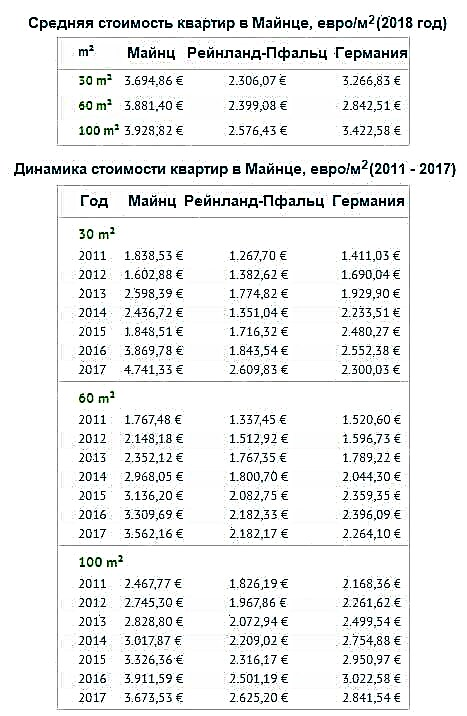

The following table contains data on the average apartment prices in different districts of Mainz:

Prices for individual residential buildings of various sizes
Information about the price at which you can buy a house in Mainz, Rhineland-Palatinate and Germany in 2021 is presented in the table below. We also bring to your attention information about the change in the value of houses from 2021 to 2021, the dynamics of prices is shown in the picture:


The indicators of the average cost of 1 m2 of floor space of a residential building in various districts of Mainz are presented in the following table:

We suggest that you familiarize yourself with the average prices for private houses in different parts of the city of Mainz:
| District | House prices (euro) |
|---|---|
| Altstadt (Altstadt) | 860 000 |
| Bretzenheim | 442 000 |
| Drais | 478 000 |
| Ebersheim | 373 000 |
| Finthen | 380 000 |
| Gonsenheim | 508 000 |
| Hartenberg-Münchfeld | 455 000 |
| Hechtsheim (Hechtsheim) | 434 000 |
| Laubenheim (Laubenheim) | 480 000 |
| Lerchenberg (Lerchenberg) | 434 000 |
| Marienborn | 390 000 |
| Mombach | 291 000 |
| Neustadt (Neustadt) | 744 000 |
| Oberstadt | 607 000 |
| Weisenau | 501 000 |
The table below provides information on the average prices for condominiums in the areas of Mainz where they are currently available for purchase:
| District | Condominium prices (EUR / m2) |
|---|---|
| Altstadt (Altstadt) | 2.600 |
| Bretzenheim | 2.300 |
| Ebersheim (Ebersheim) | 2.150 |
| Finthen | 2.050 |
| Gonsenheim | 2.400 |
| Hartenberg-Münchfeld | 2.250 |
| Hechtsheim (Hechtsheim) | 2.300 |
| Laubenheim (Laubenheim) | 2.300 |
| Lerchenberg (Lerchenberg) | 1.550 |
| Marienborn | 2.500 |
| Mombach | 2.050 |
| Neustadt (Neustadt) | 2.300 |
| Oberstadt | 2.550 |
| Weisenau | 2.350 |
Rental prices for residential and commercial real estate by district
The typology of rental housing offers in Mainz is so different that sometimes we can talk about completely opposite offers. It should be taken into account that, despite the antiquity of the city, there are a lot of new districts in Mainz, and basically the cost of rented premises in them is similar to the prices in the suburbs.
In addition, due to the developed transport network, it is difficult to distinguish between the historical city and modern districts. Only in some of them (those that are far from the center) you can rent an apartment for 10-20 euros per month cheaper than in the central parts of the city.
In Mainz, there are a lot of offers for renting villas, maybe even more than offers for renting apartments - this can not be found in every city in Germany, let alone an old one.
The cost of renting apartments is in a wide range, depends on many factors (area, the degree of historicity of the house located near the infrastructure, area), and it is quite difficult to predict it. But the prices for renting villas are more or less stable at the level of 1100-1400 euros per week.
Rental prices for commercial properties in Mainz are also high, but most investors are willing to lease buildings for subsequent sublease.
Entrepreneurs wait for the decline in demand for rented warehouses, basements, first floors of residential buildings, fully equipped restaurants and cafes, after which they put them up for rent at a higher cost. A similar scheme works great for residential properties, especially student apartments.
Before the start of the school year, the demand for apartments increases so much that the parents of students are ready to overpay for housing and negotiate with other tenants about renting 3-4-room premises in a club.
The current rental prices for some of the demanded types of commercial real estate are presented in the table below:
| Commercial property | Area, m2) | Cost for 1 m2 (euro) | Total cost (EUR) |
|---|---|---|---|
| Office building | 11.239 | 10 | 112.390 |
| Private practice room | 360 | 12 | 4.320 |
| Warehouse for food | 7.200 | 4.4 | 31.680 |
| Shop | 75.05 | 4.49 | 337 |
| A cafe | 35 | 28 | 980 |
| Grocery store on the ground floor of the building | 312 | 43.27 | 13.500 |
| A restaurant | 131 | 15.27 | 2,000 |
| Exterior for the automotive trade | 800 | 2 | 1.600 |
| Open area for car trading | 324 | 4.63 | 1.500 |
Prices for renting apartments of various sizes
On average, 12 days pass from the publication of an advertisement for the rental of apartments in Mainz to the signing of a contract with a tenant - this indicates an extremely high demand. For comparison: the average for Germany is 15-18 days. Mainz residents spend an average of 19.7% of their monthly income on renting an apartment.
An idea of the cost of renting apartments in Mainz, Rhineland-Palatinate and Germany will help to form the first of the tables below. The second table will tell you how the prices for rental housing grew from 2021 to 2021:

The table below provides information on the average rental price for apartments in different areas of Mainz:

Private house rental prices
The average rental prices for 100 m2, 150 m2 and 200 m2 houses in Mainz, Rhineland-Palatinate and Germany are shown in the first table you see below. The second table shows the dynamics of rental prices for houses of various sizes for the period from 2021 to 2021:


The table below provides information on the average rental prices for houses in different districts of Mainz:

Conclusion
Apart from luxury real estate, buying a home in Mainz, taking into account the level of rental prices, is a profitable investment, because:
- The city has good economic prospects, an additional advantage is the proximity of the metropolis of Frankfurt. The local economy is characterized by a balanced structure - it does not depend on any one industry or service sector. Winemaking, logistics, mass media, technology, industry, educational and medical services are developing here.
- The capital of Rhineland-Palatinate is the largest city in the federal state, its population is constantly growing.
- Convenient transport links allow residents to quickly get to neighboring settlements, move between the hinterland of Mainz and in a short time reach the railway station and Frankfurt airport.
- The unemployment rate in the city is low, which is largely facilitated by the presence of such large employers as the Johannes Gutenberg University, the university clinic and the representative office of the federal network agency. This means that the demand for real estate in the city is solvent. The purchasing power of the residents of Mainz is well above the national average.
- Mainz has a high standard of living; every year hundreds and thousands of residents of other German cities and foreign citizens move here for permanent residence.
- The infrastructure of the city, the abundance of holidays and places for cultural pastime do not allow people to get bored and think about resettlement.
- The city attracts tourists, clinic patients, students, start-ups and seasoned entrepreneurs.
Everything speaks in favor of the fact that residential and commercial real estate in Mainz will only get more expensive over time. And local authorities are looking to meet the growing demand by expanding urban areas and reclaiming vacant land inside Mainz, such as the largest construction project at Winterhafen harbor and smaller projects in the center at the former Zollhafen customs harbor and in the Gonseinheim district.
In conclusion, let us recall the main indicators of the cost of buying and renting real estate in Mainz, which were obtained in the course of assessing the investment attractiveness of residential properties in the city:
| Average rental price | 9.30 euro / m2 |
| Average home value | 461,000 euros |
| Average cost of a condominium | 2,300 euro / m2 |
| Average cost of 1 m2 of apartment area (30 m2) | € 3695 |
| Dynamics of real estate prices in comparison with the previous year (2017) | 0.022 |
| Average rental yield | 0.052 |

